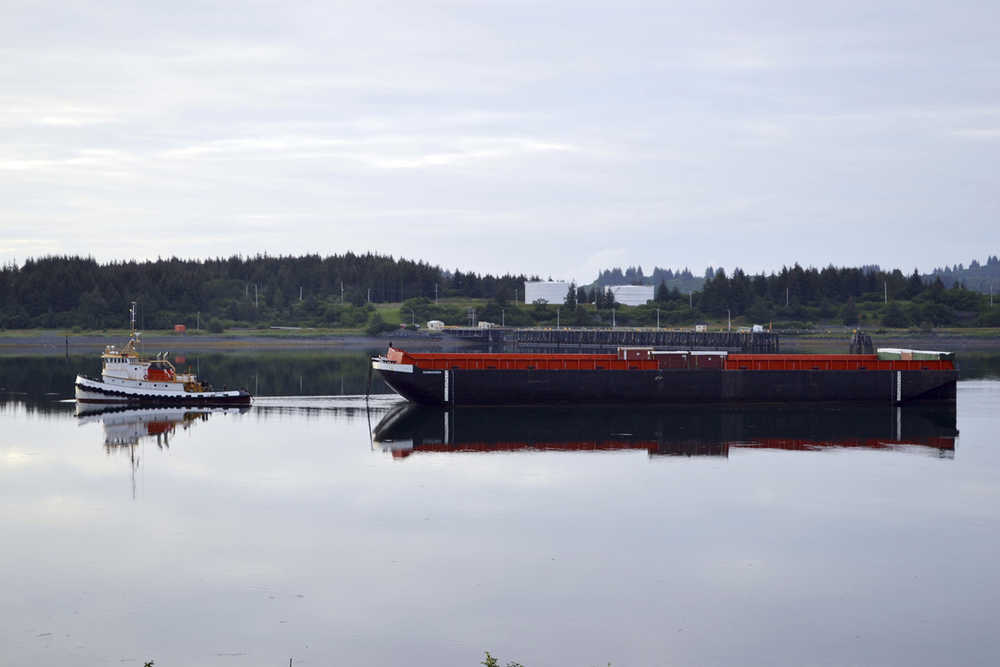JUNEAU — A barge that will be used to haul away tons of marine debris from Alaska shores — some of it likely from the 2011 tsunami in Japan — arrived at Kodiak on Wednesday.
The project, massive in scope, will involve removing heavy-duty bags of debris cached above the high-tide line on remote beaches and stockpiled at a storage site in Kodiak as well as materials collected this year. From Kodiak, the barge is scheduled to make additional stops as it heads to Seattle, where debris will be sorted for recycling. Remaining debris will be sent by train for disposal in Oregon.
Depending on the tides, crews using dump trucks hoped to finish loading the bags from the Kodiak storage site Wednesday. The intent was to send the barge off by early Thursday morning, ahead of a planned project kickoff event in Kodiak on Thursday afternoon, state Department of Environmental Conservation spokeswoman Candice Bressler said.
Bressler watched as the barge came in Wednesday morning. She called it majestic.
“It looked like it’s coming to town to save the day and get all of this stuff out of Alaska,” she said.
The scope of the project is virtually unheard of in Alaska. It is being funded in part with $900,000 the state received from its share of a $5 million gift from Japan for parts of the U.S. affected by debris from the 2011 earthquake and tsunami that killed thousands of people in Japan. Gulf of Alaska Keeper, a cleanup organization which is coordinating the project, has committed $100,000. Crews in British Columbia will be able to add debris as the barge passes through, contributing to the cost of the project if they do.
Gulf of Alaska Keeper President Chris Pallister has estimated the project cost at up to $1.3 million. It was spurred in part by the amount of material that has washed ashore and the high cost of shipping small boatloads of debris from remote sites to port, Pallister has said. Alaska’s tsunami marine debris coordinator has said an Anchorage landfill requirement that the common debris items of fishing nets and lines be chopped up also was problematic.
While conclusively identifying items as tsunami debris can be tough, Pallister and others involved in debris cleanup and monitoring said the volume and type of material that has washed up in Alaska has changed since the tsunami.
Before the tsunami, a lot of old fishing gear would appear on the beach. But afterward, the debris included lots of Styrofoam and urethane, Pallister said.
Property stakes and crates used by fishermen in Japan also washed ashore, he said.

